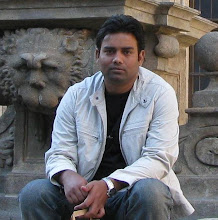Statistics:
Release Year – 1963
Running Time – 172 minutes
Director – John Sturges
IMDB Rating – 101 of top 250 (8.4/10)
Awards – Nominated for Academy Award in category Best Editing in 1963, Won Best Actor in Moscow International Film Festival in 1963
Summary:
As the German POW camp commandant said , “We have kept all the rotten eggs in one basket”, so the trouble was welcome. This movie is about a real mass escape from a German POW (Prisoners of War) camp, Stalag Luft III, based upon the book of the same name by Paul Brickhill. The movie starts with a briefing from German commandant to the camp residents. He is shown later talking to British officer of higher rank, stating that the escape from the camp is impossible so planning any escape would be futile. British officer replied whether the commandant is asking the prisoners not to their duty as escaping from a POW is “the duty” of each prisoner.
There were shown some futile and little idiotic escape tries from the prisoners in the start of movie, all attempts were disabled by German guards of course. Then came Roger Bartlett, RAF, to the camp who was caught by Gestapo after his escape attempt. This Roger Bartlett planned with other associates of this camp, a mass escape which will create a confusing state among the Germans as all will go out in search of them. And he planned the escape of 250 people, whopping….He planned to dig three tunnels, Tom, Dick and Harry, so that if any one tunnel is discovered then the other two will serve the purpose. He also had to arrange the escape of people out of Germany so much more to be done on dresses, false documents, ration etc etc. Now such a large scale project is to be executed in a POW which is the most secured in Germany, how will they do it? So get the DVD and set for a complex but simple, intrigue yet possible, one of the largest such attempt made in any POW. But remember, Murphy’s law applies to all such projects as well…..
Trivia:
1. Several cast members were actual P.O.W.s during World War II.
2. The motorcycle scenes were not based on real life but were added at Steve McQueen's suggestion.
3. The real-life escape preparations involved 600 men working for well over a year. The escape did have the desired effect of diverting German resources, including a doubling of the number of guards after the Gestapo took over the camp from the Luftwaffe.
4. Roger Bartlett is modeled after Roger Bushell, a British officer who was involved in the real escape and, like Bartlett, was executed for his role therein. The scarring around Richard Attenborough's eyes is a tribute to Bushell, who received such scarring from a competitive skiing accident.
5. Richard Attenborough was an RAF pilot during World War II, just like his character.
6. The newspaper that Ashley-Pitt ('David McCallum') reads on the train is the Völkischer Beobachter, a real newspaper produced for 25 years by the National Socialist German Workers Party. It served as a propaganda sheet for the Nazis and helped bring Hitler to power. At its height, it had a circulation of approximately 1.4 million. The headline for the issue seen in the film translates roughly to "Day after day, the Soviets have high, bloody losses." Given that the escape in the film occurs in the summer of 1944, this too can be viewed as propaganda. The Nazis had transferred hundreds of thousands of troops to Normandy to stop the Allied advances after D-Day, allowing for the Soviet's to launch Operation Bagration on 22 June, which pushed the Nazis back into Poland by the beginning of 13 July and sparked the Warsaw uprising. In all, the Soviet advance caused German losses of approximately 670,000 dead, missing, wounded and sick, including 160,000 captured. Although the date of the escape is unclear, given the green pastures around the Alps that the escapees encounter, one can easily surmise that the newspaper was putting a positive spin on the battles in the east.
Tuesday, May 18, 2010
Subscribe to:
Post Comments (Atom)


No comments:
Post a Comment